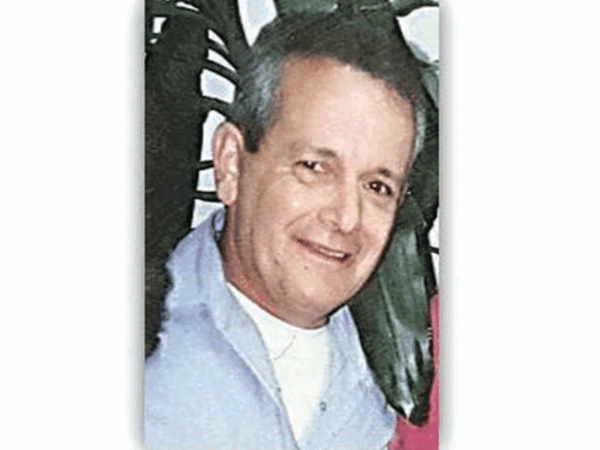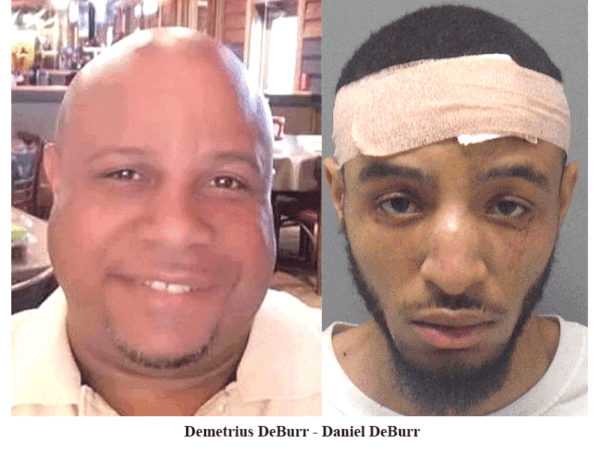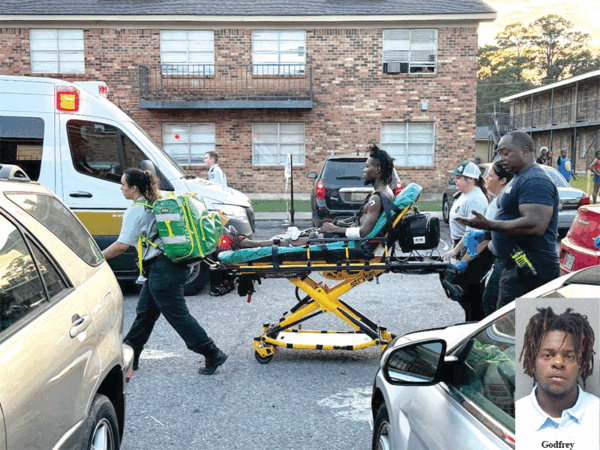Huttig Arkansas is just fifty miles from Monroe, even considering twists and turns of some of the back roads to the get to Monroe, it was less than less than an hour’s drive.
Huttig is a quiet town, too quiet and too small for major drug dealers to pay it any attention. The little town only had just over 700 residents in 2012. Those who wanted drugs could get them quickly if they didn’t mind driving the fifty miles because there were plenty of connections in Monroe. Crack in Monroe sold on the streets for $500 to $800 an ounce, and a profit could be made if sold in Huttig at a higher price, since it was harder to get.
The Drug Buy Set UP
Records of the trial detail the planning and execution of a drug deal that turned into a double murder.
On June 29, 2012, three Huttig friends decided to drive to Monroe to buy an ounce of crack cocaine that would be brought back to Huttig for use or sale.

The three were: Ross Waters, Pierre Boyette, and Gregory Payne. They made their hookup in Monroe and planned the pickup point to be at 400 Allen Street. Payne made the connection with his Monroe contact Latara Williams who confirmed that the deal was set for a purchase price of $750. Williams promised to have the crack ready for Payne when he showed up.
The planned purchase was for an ounce of crack cocaine, just about six teaspoons full. However, back in Huttig, it would probably sell for double the amount because of the law of supply and demand, especially if it was diluted. The $750 was a fair street price; anything over $800 would have been too much and a deal breaker.
The Huttig buyers showed up at 400 Allen Street, they were cautious, looking out of windows and checking for police. Latara knew the contacts, but they had to be sure they were not being set up by law enforcement.
The deal goes down
When the three arrived at the 400 Allen Street address, they met not only Williams but also Willie Lockridge, Jr., Amechea Charlston and another black male known as “Mario.” The four planned to carry out their robbery plan and send the buyer back to Huttig empty handed. The four were comfortable with each other. They had worked successfully together on two other drug deals in the last month, a fact that Williams later confessed to police.
Williams told police that this was the third time that he had done a narcotic transaction with them in the last month, each plan was different. This plan was for Williams and Charleston to wait at the 400 Allen Street address with Waters, Boyette, and Payne and to stall them while “Mario” and Lockridge went to get a gun.
Shooting Starts
The stall routine began, and so did the tension as each minute passed. Boyette sat on the steps, and small talk began. Tensions tightened until about 15 minutes later when Lockridge showed up with a gun hidden in his waist band. Williams didn’t see the gun that Lockridge was supposed to secure until Lockridge walked up to him and lifted his shirt to let him know that he had the gun. The armed robbery was about to take place.

Lockridge then pulled the gun from his waistband, pointed it at Waters, Boyette and Payne and said “give it up” referring to giving the money to them at gunpoint. Then something happened that wasn’t part of the plan. According to Williams, Lockridge then just started shooting at the Huttig men; bullets few everywhere. The sounds, like fire crackers, filled the air as instinctively everyone started to duck for cover.
Two of the Huttig men didn’t duck fast enough. Williams told police that Boyette fell after being shot just past the steps of the porch where he was sitting when the incident took place. Waters was wounded by one of the shots but managed to run approximately one block down the street before collapsing. The both died.
Williams and other witnesses at the scene said that they saw Lockridge walk up to Boyette, who was lying face first in the front yard, roll him over, then steal the money out of his pockets.
Crimes Multiplied
The crimes they committed began to multiply. When they talked about robbing someone with a gun that was a conspiracy. If they robbed the victims with a weapon, it would be an armed robbery charge. If someone died and they robbed the person as well, it could mean 1st-degree murder, a death penalty charge. Even if all of them didn’t pull the trigger, they would all be accessories after the fact and face serious jail time over $750.
When the police arrived, warrants were issued for armed robbery with a weapon and first-degree murder.
Was the outcome?
Two men died, Lockridge was identified as the shooter, and he was initially charged with first-degree murder (because he killed someone and stole from them) with no bond and a single charge of armed robbery with a bond of $750,000.00
Thirteen days after the two murders, on July 12, 2012, a grand jury returned indictments of 1)Conspiracy to commit armed robbery 2)Armed robbery with the use of a firearm 3)two counts of second-degree murder. Charged with these offenses were: Charleston, Lockridge, and Williams.
On December 18, 2012, Williams pleaded guilty to arm robbery with use of a firearm. The conspiracy charges and the murder charges were dropped. He was sentenced to 20 years without benefit of parole.
Fourteen months later, on February 20, 2014, Charleston plead guilty to conspiracy to commit armed robbery. All other charges were dropped including the murder charge. He was sentenced to 19 ½ months at hard labor but was given credit for time served. He was released from jail shortly after his plea bargain.
February 7, 2014, Lockridge plead guilty to two counts of manslaughter and was sentenced to 30 years in prison for both manslaughter charges. Instead of 60 years, he only received 30 years because the judge allowed him to serve the sentence for both murders at the same time.




